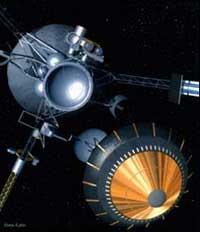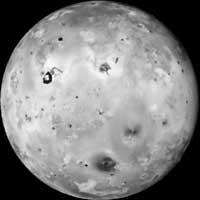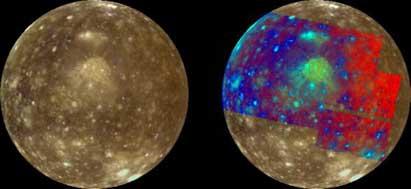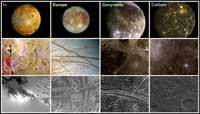Latest Galileo Probe Adventures
2001/03/20 Astobiza, Amaia
The new project will cost 9 million dollars and will end in August 2003. This month the probe will be sent into Jupiter's atmosphere and upon reaching it disintegrates like a fireball. But before disappearing forever you will have to observe several moons of Jupiter.

On May 25 of this year it will fly to 123 kilometers of the satellite Calisto. This maneuver will be very important as Calisto's gravity will alter the probe's path and allow it to fly over the polar regions of the Io volcanic moon during the months of August and October. In this flight, Galileo portrays the moon Io and analyzes dust particles. With this observation scientists want to know if the moon creates its own magnetic field. Since 2002 the Galileo probe will not be able to take photos. However, he will continue to study Jupiter's magnetic field with seven other instruments. In January 2002 it passed again near the Calisto satellite, near the equator. Then, in November of the same year, it comes very close to Jupiter and passes to about 500 kilometers of the Moon Amaltea. In this case, it will analyze the mass and density of the Moon, which, according to previous studies, is ten times smaller than Io. Thanks to this last orbit, in August 2003 you will face the giant planet Jupiter, whose atmosphere will burn the Galileo probe.
The destruction of the probe has been recommended by the National Research Council. It seems that before taking off it was not sterilized, so if Europe opposed the moon, there is the risk of biological contamination in this satellite. If this happens, another NASA project could crumble. Scientists want to find out if there is life on this satellite. It seems that under the solid European ice sheet lies the liquid sea and in order to analyze it it it is necessary to keep the liquid in its original state.
NASA officials have been very satisfied and proud of the work done to date by Galileo, who has performed very well during his orbit years. Among other findings, through Galileo, evidence of volcanic activity was found on the moon Io. In addition, in December 2000, he joined the Cassini spacecraft, which was headed to Saturn, observing between the two the Jobian system and its magnetic environment.

Gai honi buruzko eduki gehiago
Elhuyarrek garatutako teknologia





